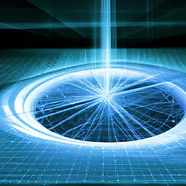
Visitors Counter: Total Number to All Pages
Publications outside Specialty
Tabata's Works in Non-Physics Fields
The image below is Mirror Lakes, New Zealand, by Adabow at English Wikipedia [CC BY-SA 3.0], via Wikimedia Commons. The signboard carries backward letters upside-down. The letters appear normal in the image on the lake. Thus, the mirroring on the water reverses the top and bottom of the signboard. On the other hand, the mirroring also causes left–right reversal because the backward letters running from right to left become normal ones running from left to right in the image. Can you explain the difference between these two reversals? Related papers are the last two on this page.

“Study the science of art. Study the art of science. Develop your senses — especially learn how to see. Realize that everything connects to everything else.” — Leonardo Da Vinci
The above words are from the article: Michael Simmons, “People with ‘Too Many Interests’ More Likely to be Successful, According to Research,” Observer (May 3, 2018) [https://observer.com/2018/05/people-with-too-many-interests-more-likely-successful-polymath-entrepreneurship-antifragile/].
Symbols on the left are links to sources, which are post-prints re-edited with corrections when those are necessary. You can find the published version by the DOI link at the top of the post-print.
Effective treatment of the interpolation factor in Marquardt’s nonlinear least-squares fit algorithm
T Tabata, R Ito
Comput. J. 18 (3), 250–251 (1975)
Abstract: A modification of Marquardt’s nonlinear least-squares fit strategy is proposed. The performances of the modified and original strategies have been compared for six test problems. The results show that execution times for difficult problems are much reduced by the modification.
Commentary: More than 40 publications have cited this paper. The algorithm proposed was implemented, for example, on a Tektronix Graphic System. You can find a FORTRAN code based on this algorithm in the next item on this page.
ALESQ, a Nonlinear Least-Squares Fit Code, and TSOLVE, a Nonlinear Best Approximation Code, Third Edition
T Tabata, R Ito
Institute for Data Evaluation and Analysis Technical Report Supplement No. 1 (2022)
Abstract: We describe algorithms for nonlinear least-squares fit and best approximation, which we made and used for many years. The basis of the least-squares fit algorithm is the maximum neighborhood algorithm developed by Levenberg and Marquardt, and we incorporated an improved strategy into it. We call the code for this algorithm ALESQ. For fitting the equation to the data with approximately equal relative uncertainties, we devised a two-step method and included conveniences for this method in ALESQ. We made the algorithm for the best approximation based on the one developed by Osborne and Watson, incorporating a procedure to solve the “continuous” best approximation problem with a discrete data set. The name of the code for this algorithm is TSOLVE. We included in TSOLVE a routine to estimate tolerances for the roundoff of the solution. Both ALESQ and TSOLVE are also applicable to linear problems. In Appendix A, we describe procedures and methods to formulate empirical equations. Appendix B lists the works for which we used ALESQ and TSOLVE. Those works are mainly of radiation and atomic collision physics. Appendix C and D contain FORTRAN codes of ALESQ and TSOLVE, respectively.
Varietal differences in the repair of gamma-radiation-induced lesions in barley
M Inoue, R Ito, T Tabata, H Hasegawa
Environ. Exp. Bot. 20 (2), 161–168 (1980)
Abstract: Dormant seeds of 18 barley varieties were treated with caffeine, immediately after Co-60 gamma-irradiation. Damage, expressed as a reduction in 7 days old seedling height, increased more than the fourth power of dose after irradiation alone and in combination with caffeine post-treatment. Sensitivity coefficients (a1) and D50 for each of the varieties, obtained from standard function ...
Commentary: The contribution of Ito and Tabata to this work was the analysis of dose–response curves by using a model based on the multiple target theory.
Mirror reversal simply explained without recourse to psychological processes
T Tabata, S. Okuda
Psychon. B. Rev. 7 (1), 170–173 (2000)
Abstract: This paper proposes a simple and definitive solution to the mirror reversal problem, “Why does a mirror reverse left and right but not up and down?” The solution is given by combining the inversion caused by the optical process of mirroring and the definition of the left–right axis. Thus the left–right reversal of mirror images essentially does not involve psychological processes, in contrast to the multiprocess hypothesis recently proposed by Takano.
Commentary: More than 35 publications cited this paper. Corballis published a theoretical note (ours is also in the same category) describing a solution similar to ours in the same issue of the journal.
Relationship between frames of reference and mirror-image reversals
H Yoshimura, T Tabata
Perception 36 (7), 1049–1056 (2007)
Abstract. The mirror puzzle related to the perception of mirror images as left–right reversed can be more fully understood by considering an extended problem that includes also the perception of mirror images that are not left–right reversed. The purpose of the present study is to clarify the physical aspect of this extended problem logically and parsimoniously. Separate use of the intrinsic frame of reference that belongs to the object and one that belongs to its mirror image always leads to the perception of left–right reversal when the object has left–right asymmetry; on the other hand, the perception of left–right nonreversal is always due to the application of a common frame of reference to the object and its mirror image.
Commentary: One of the reviewers wrote in her/his comment on the manuscript of this paper as follows: “This may not be the last word on the mirror problem, but I think we are getting very close to the point where no more discussion or theory is necessary. People will nevertheless continue to be confused.”

